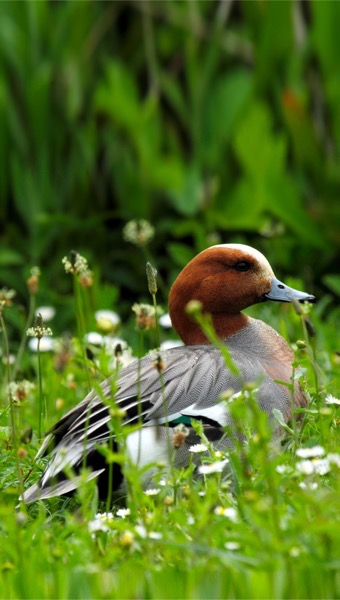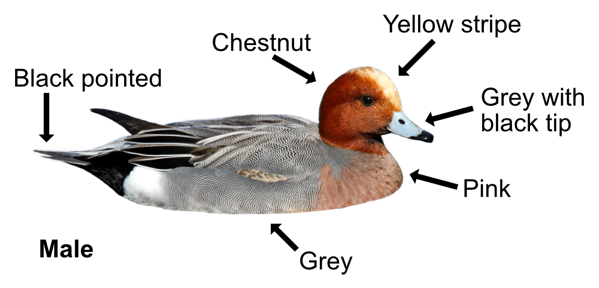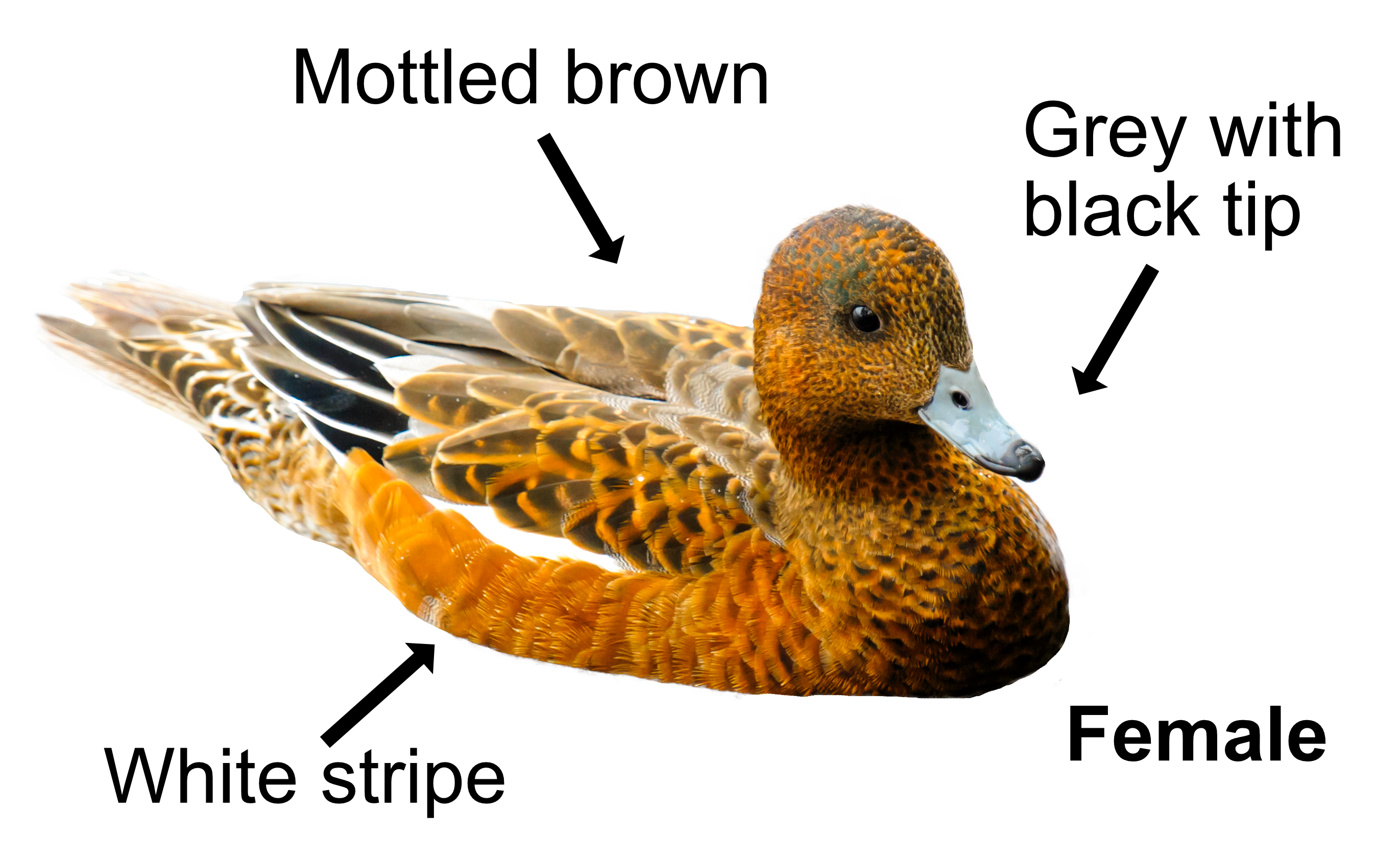
Wing commander Wigeon, with his yellow head stripe, is a winter visitor to our coastal marshes and inland lakes, arriving in October and leaving in March. Wigeons are social ducks and are often seen in large squadrons grazing on grass.
It is a dabbling duck that is smaller than a Mallard. The male has a chestnut head, yellow crown stripe, grey body, pale pink breast, a black pointed tail, and white wing patches which are obvious in flight or at rest. Its bill and legs are grey. The female is more mottled brown. In flight, they both show a white belly, pointed tails and narrow-looking wings. Their call is a loud whistling "whee-oo!" from which the Wigeon gets its 'whistler' nickname.

Wigeons are big veggies and very good at cropping grass with their short bills like duck-powered lawnmowers. Their favourite meal is eelgrass, but they will also eat leaves, seeds and algae. They sometimes follow other birds like swans and coots to pick up their waste food, letting them do all the hard work.

They breed in the northernmost areas of Europe and Russia between April and June. A tiny number breed in Britain (300-500) in places like the Pennines and Scotland. Wigeons are monogamous and form seasonal pairs. The nest is built on the ground on the tundra or in woodland and usually near water such as lakes, rivers, or wooded shores. It is a depression hidden under vegetation and lined with grass and a thick layer of mum's down. Mum incubates the 6-12 eggs hatch which after 24 days. The young can feed themselves, though mum keeps an eye on them while they are small chicks. They can fly at 40 days and soon become fully independent. There is usually only one brood.
Most of the 450,000 Wigeons we see here are from Iceland, Scandinavia and Russia. Between 50–60% of the UK's wintering population is found at ten or fewer sites. As the UK holds 20–30% of the total European wintering population, it is considered to be of international importance. For these reasons, the Wigeon is Amber Listed. The oldest ringed Wigeon lived to be 33 years old, though the normal lifespan is not much more than 3 years.
Their Latin name is 'anas penelope' where 'anas' is the Latin for 'duck' and 'penelope' refers to a duck that was supposed to have rescued Penelope when she was thrown into the sea. Her name is derived from Ancient Greek 'pene' for 'braid' and 'ops' for 'appearance'. She made herself unattractive with braids to deter suitors while her husband Ulysses was away fighting.
A close relative to our Wigeon is the American Wigeon, also known as the 'baldpate'. Like all yanks, it is a bit flashier with a mask of green feathers around its eyes and a cream-coloured cap running from the crown of its head to its bill, giving it that bald-headed look.